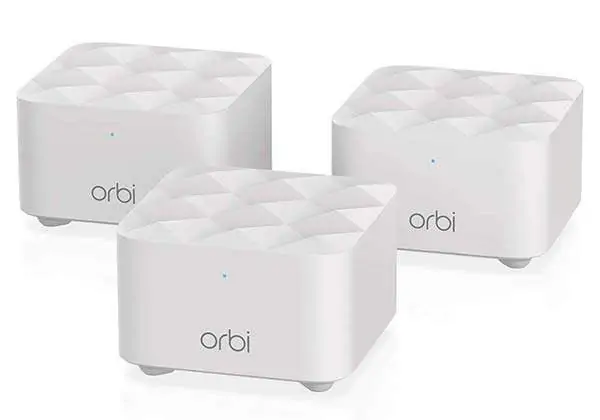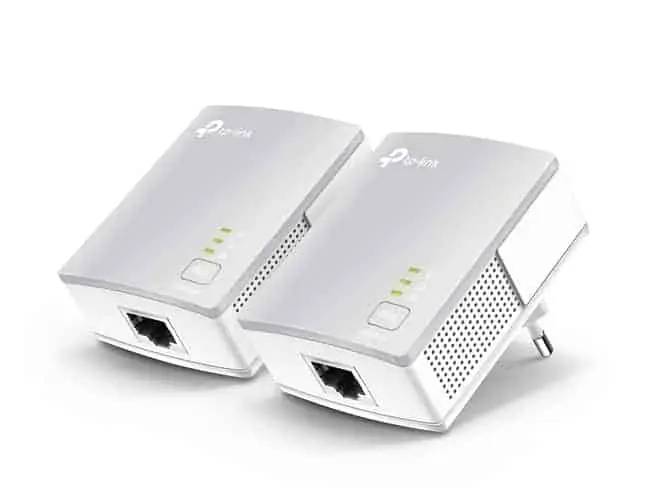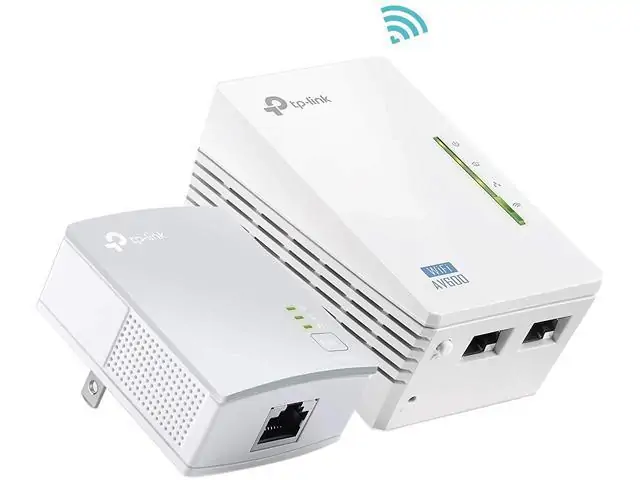Some links on this page are affiliate links and I may receive a small commission from purchases made off them at no extra cost to the reader.
Powerline Adapters and Wi-Fi mesh systems are both very useful home networking solutions which can serve a purpose in different circumstances, but what is the actual difference between the two products and which one is the best option in each individual circumstance?
Here’s a brief bottom line answer:
Powerline adapters can extend wired connectivity to all parts of the home using the house’s existing electrical circuitry, whilst Wi-Fi mesh systems extend wireless coverage to all parts of the home to allow for more portable connectivity for smaller devices like tablets and iPhones.
Wi-Fi mesh systems tend to be the more expensive of the two products, and when they work properly they can indeed allow for seamless browsing and streaming over Wi-Fi in large homes. However wireless powerline adapters are also available which are often cheaper and will do much the same job as a mesh system in certain instances. Let’s compare the two products in more detail below.
How do Wi-Fi Mesh Systems Work?
Wi-Fi Mesh Systems consist of a set of two or three nodes or pods which spread wireless network coverage around the home, delivering a more reliable signal to more parts of the home versus just using your standard router supplied by your ISP.
Wi-Fi Mesh Explained & Demonstrated
Each kit usually has a main node which is connected to your current router with an ethernet cable. This then syncs up with your current router’s Wi-Fi and you then have your first mesh node.
You then usually need to download or install an app to configure the mesh network, and start placing the other one or two nodes strategically around the home so they can pick up the signal from the other nodes but also boost the Wi-Fi to more remote parts of the home for a more reliable signal.
See the video above for a demonstration of this. The nodes connect through what is known as a dedicated data backbone, meaning they can pass the full bandwidth (or close to it) from the main router onto each other, delivering more bandwidth to parts of the home which would struggle to get it just using the original router.
In this way, Wi-Fi mesh systems are designed to allow for higher bandwidth activities like streaming and downloading where they perhaps might have been difficult before, in rooms further away from the main router.
Sometimes it plays out this way and sometimes it doesn’t depending on a lot of factors such as the size and structure of the property. Reviews on the effectiveness of mesh system were often mixed when the products were first released but have slowly improved as manufacturers have released patches and firmware updates to improve performance and reliability.

The Netgear Orbi RBK40 Mesh System (paid link to Amazon) is an entry level kit which will spread reliable wireless coverage for an average 4 bed, 2 floor property up to 3000 sq ft. Larger kits are available which can cover larger properties.
How do Powerline Adapters Work?
Powerline adapters work differently, delivering wired rather than wireless connectivity to different parts of a home. They consist of a kit or pair or adapters, one of which is plugged in and connected to your router, the other of which is plugged in and connected to your device in another part of the home.
The two plugs then communicate through the electrical circuitry of the house to deliver a strong, wired connection to the device, even if it is several rooms or floors away from the router. They are an ingenious home networking solution, taking advantage of the little known fact that copper wiring can be used to transmit data as well as electricity.

The TP Link Nano TL-PA4010 Kit model (paid link to Amazon) is an entry level, best selling no nonsense powerline adapter model with just one ethernet port and no passthrough. It will provide a solid, wired ethernet connection to your router using the existing electrical wiring of your house.
Much like mesh systems, powerline adapters are designed to spread more reliable connectivity to more remote parts of the home, but they do so in a different way. Powerline adapters deliver a wired connection using house circuitry, whilst mesh systems deliver wireless connectivity through a network of nodes capturing and amplifying wireless signals to different corners of the home.
However, wireless powerline adapters are also available which will do the same job as a normal powerline adapter, but will also produce a cloned, wireless access point at the receiving end as well as one or more ethernet ports for wired connectivity. In this way they can do a broadly similar job to a mesh system and are potential alternative. We will look at this in more detail below.
When Is a Powerline Adapter Better?
A powerline adapter is often a better bet if a couple of different criteria are met. Firstly, if the users needs pure bandwidth and solidity in a connection, then powerline adapters can be better, since they deliver a wired connection, which is almost always stronger and more reliable than a wireless one.
This can be important for heavy streamers and downloaders, who need maximum bandwidth, but also for gamers who need minimal latency or ping time. In other words, the connection needs to be as solid and reliable as possible, with data being sent back and forward with the least delay and interference.
In this case a wired connection is preferable, and a powerline adapter will allow for this, but using the existing house wiring instead of running long cables through the house. An important qualifier to this though is that the circuitry of the house needs to be wired correctly and in good condition, so the adapters can communicate.
In most houses this is in fact the case and powerline adapters will deliver a connection similar to if you were plugged directly into the router, delivering similar bandwidth and adding only a few milliseconds of ping, which is ideal for gamers.
In a small number of larger or older houses they may not work; see our article on this. Interference problems are not so prevalent with newer models and can easily be overcome by moving the adapters away from certain appliances which may cause problems.
However standard powerline adapters deliver a wired connection only. If the user wants Wi-Fi connectivity at the receiving end then a wireless powerline adapter is the product of choice, doing the same job but also providing a cloned wireless access point in the room they are being used in. This can be an ideal and often cheaper alternative to a mesh system; we will go into this more further down in the post.
When is a Wi-Fi Mesh System Better?
For a start it is important to acknowledge that Wi-Fi mesh systems tend to be quite expensive pieces of kit, often running into several hundred dollars or pounds. This is in contrast to the much cheaper powerline adapters, with many good models coming in at under a hundred dollars.
So it is important to consider powerline technology if you are able to find a home networking solution that gives you the coverage you want with it. For example it is possible to install multiple powerline adapters in different rooms and create a powerline network with wired access points in different parts of the home. wireless powerline adapters can also provide wireless connectivity if browsing on smaller devices is what you need.
However there may be some cases when you cannot use powerline technology in your home because the circuitry does not allow it. The wiring may be too old or worn, or different parts of the house may be on different meters or circuits, which prevents the powerline adapters from connecting with each other and delivering the signal. This can be the case in larger houses or extensions and annexes which have their own feed.
In these cases then Wi-Fi mesh systems may be a good alternative, in that they rely purely on wireless technology and not on house circuitry. They can be thought as more advanced versions of the cheaper Wi-Fi boosters and range extenders found at the top of our powerline page, delivering a better signal further into the home than these models.
They can also be useful in very large properties where you want widespread coverage, since to install powerline adapters in every single room in a large property will push the cost up close to what you would pay for a mesh system anyway, so the numbers begin to add up. Powerline adapters may also not work in these larger properties if the circuitry is complex or old and worn.
Some people also don’t want to be messing around with any wired connections and want all their connectivity to be wireless for browsing and streaming on the move with no wires trailing around. Smaller devices like tablets and iPhones also can only connect by Wi-Fi and so a wireless solution is the only option for these devices.
However, before forking out so much for an expensive Wi-Fi mesh kit, it is worth considering whether you can get what you need using a cheaper wireless powerline adapter kit, which will reproduce a strong Wi-Fi access point wherever you plug it in, allowing you to extend coverage, and also provide wired access points for games consoles and streaming devices.
These can be an effective solution which can do the same job as a mesh system for a much lower price, with even the best models usually coming in a less than $150 as opposed to several hundred for the best mesh systems.

The TP Link WPA-4220 Kit is their entry level wireless powerline adapter, with two ethernet ports plus a cloned Wi-Fi access point at the receiving end, allowing you to connect smaller devices like tablets and iPhones to this closer and stronger access point.
See our Powerline Adapter page for details and links to this and more advanced models with faster speeds, dual band Wi-Fi and passthrough plug sockets.
The Bottom Line – Which is Better?
In summary, we believe that for extending internet coverage to more parts of the home, powerline adapters or wireless powerline adapters are often a cheaper option that can basically do the same job as a mesh system.
Powerline adapters should be the product of choice particularly for gamers, where minimal latency is the priority, since even boosted Wi-Fi can still cause lagging due to network congestion and other problems largely built into Wi-Fi that we have detailed elsewhere.
As such, they are worth considering if the electrical circuitry of your house is in good condition and wired to allow communication between the plugs.
In most cases it will be, as long as the house runs off the same feed and there are no idiosyncracies in the way the house is wired. See our article for the rare cases you may run into problems and also this excellent FAQ guide for a run down of when they will and will not work.
In houses where this isn’t the case, or where people simply want all wireless connectivity with no wiring or plugs, then mesh systems are a better option, though they can be a hefty investment. They may be ideal for larger or older residences where powerline technology is not possible.
A Wi-Fi Mesh System Being Installed and Tested
